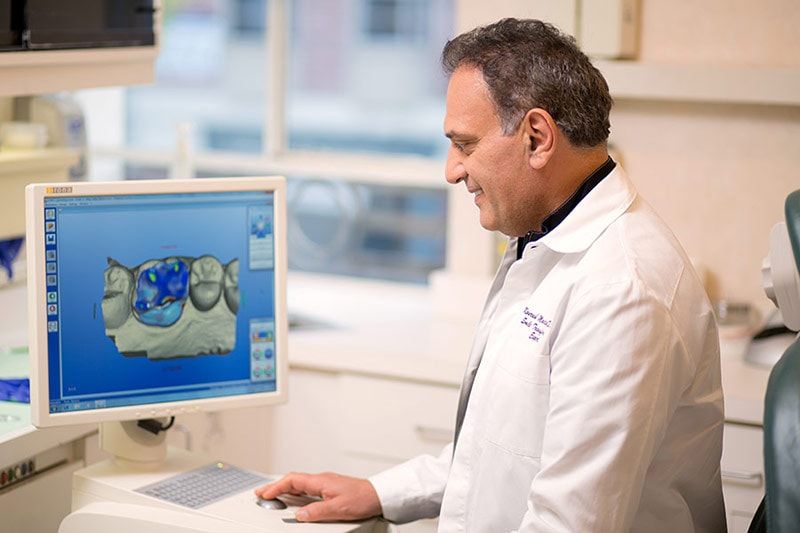What to Consider When Migrating to the Cloud
Is your practice still hosting data on servers in the back room? Still closing the office for several days when training is necessary? Andy Jensen of Curve Dental, Inc., says that's crazy. For reasons ranging from stimulating practice growth to ensuring HIPAA compliance, the time is now to migrate your practice to a cloud-based system.

Cloud-based systems enable dentists to work how, when and where they want.
Is it really just a question of when, not if, all dental practices will migrate to a cloud-based system?
Andy Jensen, vice president and CMO at Curve Dental, Inc., a software development company that provides web-based management solutions for dentists and dental groups, chuckles as he recalls being asked a similar question in the mid-1990s. He was asked, is everyone going to move to Windows from DOS?
Jensen’s answer was a resounding, “Yes, because that’s what all the software vendors are designing for. They have maybe one or two people updating their DOS system, but at some point they’re going to look at those DOS guys and say, ‘Out of the pool.’ We’re done spending resources on DOS, and moving to Windows.”
It’s the same scenario today where client-server software systems and cloud-based systems are concerned.
OUT OF THE POOL
Jensen sets up a hypothetical scenario. Imagine you’re going to start your own software company tomorrow. Are you going to develop that software for a client-server, or develop it for the web? The obvious answer is the web.
“Every software vendor out there should be looking at the cloud and saying, ‘If I’m spending less than 90 percent of my development resources on the cloud, then I’m in trouble,’” Jensen says. “It should be 90 percent spent on the cloud, and 10 percent spent to maintain what you have on the client-server side.”
That, Jensen says, is the way doctors coming out of dental school are thinking. They’re not going to put in a server because they recognize it’s not the current technology platform standard. They recognize that their entire life is on the cloud. So why would they want to be transported back to the mid-1990s when they enter their practice?
Beyond staying current, a cloud-based system helps ensure practice compliance with audits. For example, Jensen explains that the HIPAA security rule has 19 different requirements specific to having a server in a dental practice. Eliminate the server, and you have 19 fewer requirements to worry about.
“If you have a server in your practice, in the event of catastrophic loss, you have to be able to have everything back up within 24 hours,” Jensen says. “How do you do that if you just lost your server, and it’s buried in 5 feet of water?”
FAMILIAR DESIGN
If you’re thinking of putting a client-server in your practice, you’d better be prepared to shut down the office for several days of training. That’s lost revenue. But who today isn’t familiar with Facebook, or Amazon or Twitter? Or shopping and banking online? Software user interface designers are primed in thinking interoperability, and intuitive interfaces. So when an end user jumps on Curve Dental’s cloud-based management system, it has a familiar look and feel to it.
“That’s what we take our inspiration from, is the new world of surfing the internet and shopping and socializing online,” Jensen says. “Everyone already understands that anything that is highlighted in blue is a clickable and actionable item. So that’s what we mimic. We design specifically for a browser.”
Want to stimulate practice growth? Or enhance your lifestyle? Practice management software contains all the information necessary to grow your practice. With a cloud-based system, all of that information is now accessible from anywhere. It enables dentists to work how, when and where they want.
Consider a full-time dentist who’s also a full-time parent. The sooner he or she can get away from the practice means increased family time. And when the kids are put to bed, it’s easy enough to finish up some charts or analyze patient data from the convenience of their own home.
“We’ve taken all that information and burst it out from the walls of the practice,” Jensen says. “It’s much more accessible.”
EXPERIENCE COUNTS
So, what do you need to consider when shopping for a cloud-based provider? Jensen says the most important element is experience. Because the hard part of a cloud-based system is not the front end, not the pretty interface. The hard part is providing service to customers 99.99 percent of the time.
“Dependability has nothing to do with software design,” he says. “It’s about infrastructure. We use Amazon, and we use them because we know they’re professionals at what they do.”
And the only way to obtain that experience, Jensen adds, is through trial and error. Every time you hit a bump in the road you learn from the experience.
“We’ve had those bumps,” he says. “The only way your software can become more durable is through experience. And it can only come with time.”
Click here to sign up for more Dentist's Money Digest content and updates.
RELATED:
More Coverage on
·
Weighing the Pros and Cons of Dental Service Organizations
·
Goal Achievement for Your Practice
·
ACTIVA BioACTIVE Bulk Flow Marks Pulpdent’s First Major Product Release in 4 Years
December 12th 2024Next-generation bulk-fill dental restorative raises the standard of care for bulk-fill procedures by providing natural remineralization support, while also overcoming current bulk-fill limitations.